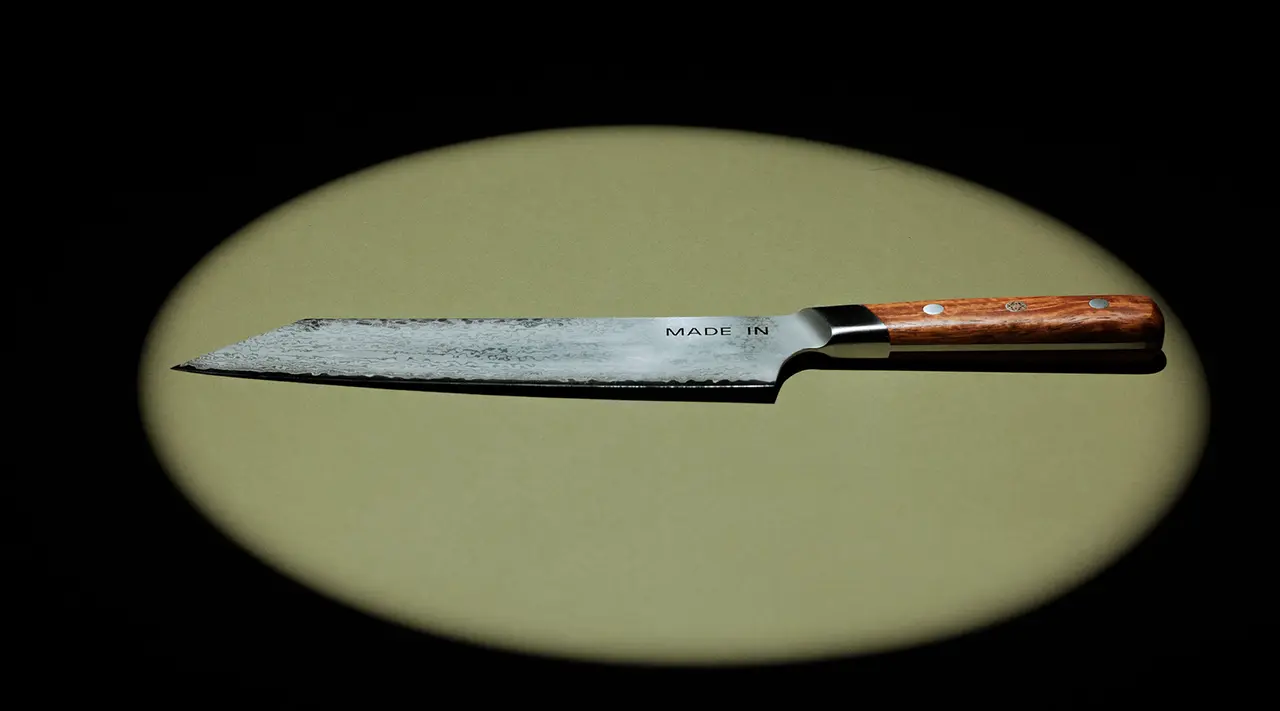Chances are, you’re probably unfamiliar with the Bunka Knife—and that’s understandable, as this versatile knife is rarely included in knife roundups. That said, think of it like a best-kept secret by serious knife connoisseurs—and since it’s an extremely versatile, standout blade, we think every knife collector should know about it. From its unique profile to its many and varied uses in the home kitchen, here’s everything to know about the Bunka Knife.
Understanding the Bunka Knife

Bunka is a Japanese term that roughly translates to “culture” in English. Similarly to the Santoku, the Bunka knife was likely invented in the years following World War II as a way to accommodate the changing Japanese diet, which was beginning to include more western cooking methods and ingredients (like beef).
Also like the Santoku, the Bunka was intended as a multipurpose knife for home cooks, capable of handling everything from vegetables to protein.
Anatomy of a Bunka Knife
In a lineup of Japanese blades, the Bunka knife stands out instantly. This traditional knife resembles the Santoku with its wide, stocky profile, yet offers a bit more precision and dexterity due to the sharply angled tip—referred to as a “reverse tanto” tip. This tip features in another traditional Japanese knife, called the kiritsuke knife. Unlike the single-bevel kiritsuke, however, the bunka is designed with a double bevel, which makes it both easier to sharpen and more versatile.
Like most Japanese-made knives, the Bunka Knife usually features a lightweight wooden handle—though you can also find Western-made, Japanese-style knives made with plastic or composite handles.
Key Features and Functions
With its unique sawed-off edge, plus the fact that it’s often made with wavy patterned Damascus steel, the Bunka knife looks like something best suited to heavy-duty butchery—not everyday chopping and slicing. Yet similarly to the Gyutou or the Santoku, the Bunka is shockingly versatile, and can even stand in for an all-purpose knife.
Proper Handling and Storage
With any kitchen knife, proper handling and storage is crucial to preventing injuries, as well as protecting your knife from getting worn down or chipped. Always, always make sure to put your knife away after washing and drying, ideally in a knife block or organizer, and never leave it loose on the counter or in the drawer. You can read more about proper knife storage in our dedicated guide.
Like many traditional Japanese knives, the Bunka Knife often comes with a sheath—called a “saya” in Japanese—for an added layer of protection, and to help keep it sharp. Our new Bunka Knife includes a Magnolia wood saya with purchase that you can use to keep your knife snug and secure between uses.
Bunka Knife Applications in the Kitchen

There’s not much the Bunka Knife can’t do well. Here are some of our favorite ways to use it in the kitchen.
Precision Slicing and Dicing
Like the santoku, the Bunka Knife features a flat edge and is used with an up-and-down—rather than a rocking—cutting motion. This makes it ideal for precise cutting work, such as thinly slicing raw fish for crudo or chopping vegetables for mirepoix.
Fine Chopping and Mincing
It may look fierce, but a Bunka Knife is excellent for delicate jobs like mincing garlic or chopping raw herbs. Again, that flat edge comes in handy, allowing you to make precise, controlled chopping motions.
Garnishing and Presentation
The Bunka Knife’s reverse tanto tip makes it a stellar option for creating delicate garnishes and other fine, precise cuts. Instead of switching over to a paring or utility knife for small-scale knifework, the Bunka Knife can transition easily from chopping and slicing to julienning, carving, and fluting. If you’re the type who likes to carve radish roses for your tablescape or fruit fans for your cocktails, the Bunka Knife is perfect for you.
Tackling Tougher Tasks
Along with fine knifework, the Bunka Knife’s heft—plus the incredible hardness and strength of most Japanese knives—make it excellent for butchery as well. Along with efficiently breaking down fish and meat, that reverse tanto tip is great at detailed butchery work like removing silver skin and finely chopping beef for tartare.
Ready to Chop?
There’s so many reasons to add the Bunka Knife to your collection: not only is this knife beautiful to look at, but it also combines the best features of the Santoku and the Gyutou, with its precision tip and powerful blade.
Our limited-release iteration of this classic blade launches Wednesday, 4/10 at 10 AM EST. Only one thousand were made—so act fast to add this to your collection before they’re gone. Sign up below to be the first to add this limited-edition knife to your lineup.






























